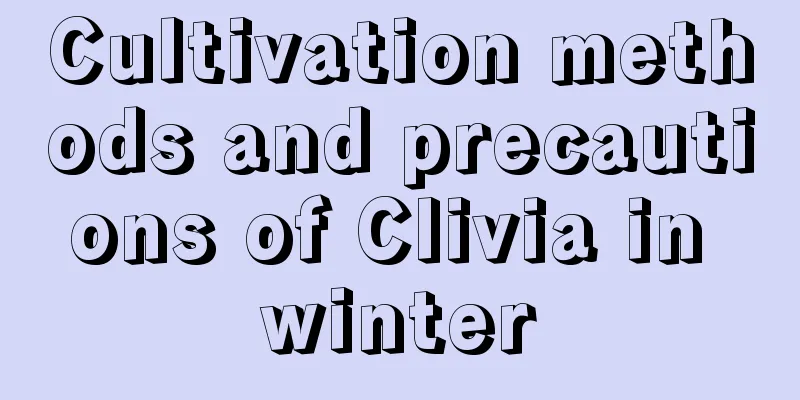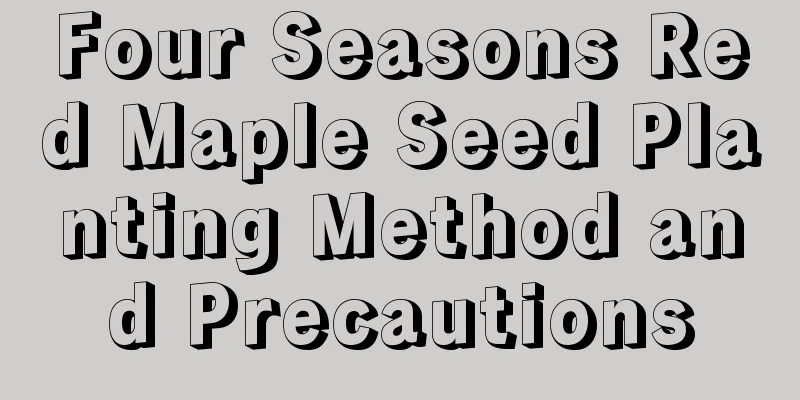Cultivation methods and precautions of Clivia in winter

|
Winter is the critical growth period for Clivia. Clivia needs appropriate sunlight in winter, but attention should be paid to the time and intensity of light. Reasonable maintenance methods can help Clivia survive the winter safely and promote flowering. The following are the cultivation methods and precautions for Clivia in winter. 1. Temperature management Clivia is sensitive to temperature, and the indoor temperature should be kept between 15℃-20℃ in winter. When the temperature is below 10℃, the growth of Clivia will stagnate, and when it is below 0℃, it may suffer frost damage. Therefore, in winter, Clivia needs to be moved to a warm place indoors to avoid excessive temperature differences. The temperature difference between day and night should not exceed 10℃. 2. Lighting Management The sunlight is soft in winter, so the Clivia can be placed in a well-lit location, such as a windowsill or balcony, to receive 3-6 hours of scattered light or direct light. Rotate the flowerpot regularly, every 7-10 days, to ensure that the leaves receive even light and avoid crooked growth. 3. Watering management The temperature is low in winter and water evaporates slowly, so the frequency of watering Clivia should be reduced appropriately. Generally water once every 7-10 days to keep the soil slightly moist. Note when watering: Water should be poured thoroughly, but avoid water accumulation. It is recommended to water at noon to avoid root damage caused by large temperature differences between morning and evening. 4. Fertilization management Clivia grows slowly in winter and requires less fertilizer, but appropriate fertilizer can be added to promote flower bud differentiation. Apply thin liquid fertilizer 1-2 times a month, such as decomposed cake fertilizer water. During the arrow-forming period, additional phosphorus and potassium fertilizers, such as potassium dihydrogen phosphate solution, can be applied to promote flower development. 5. Soil and flower pots Clivia is suitable for growing in loose, fertile, well-drained soil. It can be prepared by mixing leaf mold, pine needle soil and river sand in a ratio of 3:2:1. Choose flower pots with good drainage holes to avoid water accumulation and root rot. 6. Notes The roots of Clivia are fleshy, and stagnant water can easily lead to root lack of oxygen and rot. When watering, the amount and frequency of water must be strictly controlled. Indoor ventilation is poor in winter, so the leaves need to be checked regularly and pests and diseases should be dealt with in a timely manner if found. You can use carbendazim solution to spray to prevent and control the disease. Cut off the yellow leaves in time to reduce nutrient consumption and promote healthy growth of the plants. In short, the sunlight in winter is relatively weak, the ultraviolet intensity is lower, and the lighting time is shorter. The sunlight is soft in winter, and Clivia can be exposed to direct sunlight, but it is best to choose a period with stronger scattered light. Through the above methods, you can ensure that Clivia grows safely in winter and lay a good foundation for flowering in spring.
|
<<: Cultivation methods and precautions of daffodils
>>: Cultivation methods and precautions of Osmanthus fragrans
Recommend
What causes orchid leaves to turn yellow?
Orchid is a plant that requires careful care. Alt...
How do you get vegetable seeds?
Where do vegetable seeds come from? The planted v...
Hawaiian coconut cultivation methods and precautions
1. Pot soil requirements You can use white plasti...
When is the best time to plant strawberry seedlings?
Nowadays, many people have discovered that the pr...
How to propagate bougainvillea by cuttings
1. Take branches Choose ten to fifteen centimeter...
How to water the green radish seedlings and what should be paid attention to when transplanting
1. How to water During the growth period of the g...
How to propagate and prune baby's breath
1. Cutting method 1. Cuttings: Cuttings of baby&#...
Does the blue cloth skirt have another name? What are the effects and functions?
1. Any other names? In addition to this name, it ...
The New Year is almost here and while others are buying flowers, he buys "onion flowers". Those who make fun of him are all envious to death in the end!
“Onion head” No. 1: Daffodil! Narcissus is a trad...
Jerusalem artichoke propagation method
Jerusalem artichoke tuber propagation method Spec...
Can Mimosa be placed indoors?
1. Can it be placed indoors? It is best not to pl...
How to raise forget-me-not
1. Breeding environment 1. Soil: The requirements...
Can watermelon seedlings be transplanted?
Can watermelon seedlings be transplanted? Waterme...
How to propagate petunia (how to grow petunia seeds and what to pay attention to)
A flower friend asked : I have 3 pots of petunias...
Causes and treatments for yellowing orchid leaves
1. Too much light 1. Reason: Compared with an env...









